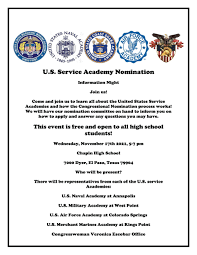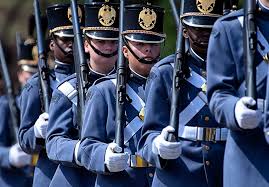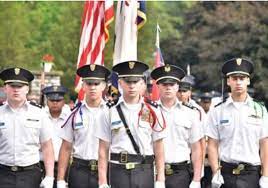The Importance and Benefits of Attending a Military Academy
A military academy is an esteemed institution that offers a unique educational experience for individuals who aspire to serve in the armed forces. These academies provide rigorous academic programs combined with military training, instilling discipline, leadership skills, and a strong sense of duty in their cadets. Attending a military academy can have numerous advantages and open doors to various opportunities.
One of the primary benefits of attending a military academy is the exceptional education it offers. These institutions provide comprehensive academic programs that cover a wide range of subjects, including mathematics, science, humanities, and foreign languages. The curriculum is designed to challenge cadets intellectually while fostering critical thinking and problem-solving skills. Graduates from military academies often excel in their chosen fields due to the high-quality education they receive.
Discipline is another fundamental aspect emphasized at military academies. Cadets are required to adhere to strict codes of conduct, including dress codes, punctuality, and respect for authority. Through this disciplined environment, students learn the importance of self-discipline and develop strong character traits such as integrity and responsibility. These qualities are invaluable not only in military service but also in various professional settings.
Leadership training is a cornerstone of military academies. Cadets are provided with numerous opportunities to develop their leadership skills through practical exercises, team projects, and structured training programs. They learn how to lead by example, make informed decisions under pressure, and effectively communicate with others. These leadership skills can be applied not only within the armed forces but also in civilian careers where strong leadership abilities are highly sought after.
Physical fitness is given significant importance at military academies as well. Cadets engage in rigorous physical training routines that enhance their endurance, strength, and overall fitness levels. Regular physical exercise promotes discipline, mental resilience, and personal well-being – all essential attributes for individuals pursuing careers in the armed forces.
Attending a military academy also offers a unique sense of camaraderie and a strong support network. Cadets forge lifelong friendships with their peers, creating a bond that extends beyond their time at the academy. The shared experiences, challenges, and triumphs create a sense of belonging and unity among cadets that lasts throughout their military careers.
Furthermore, military academies often provide numerous networking opportunities. Cadets have the chance to interact with experienced military personnel, high-ranking officers, and influential individuals from various fields. These connections can prove invaluable when seeking career opportunities or mentorship in the future.
In conclusion, attending a military academy can be an exceptional choice for individuals who aspire to serve in the armed forces. The combination of rigorous academics, disciplined environment, leadership training, physical fitness emphasis, camaraderie, and networking opportunities make military academies an ideal platform for personal growth and professional development. Graduates from these institutions are well-prepared to face the challenges of military service and excel in various civilian careers as well.
Frequently Asked Questions About Military Academy Admissions, Costs, Curriculum, Activities, and Scholarships
- How do I apply to a military academy?
- What are the requirements for admission to a military academy?
- How much does it cost to attend a military academy?
- What is the curriculum like at a military academy?
- What types of activities and sports are offered at a military academy?
- Are there scholarships available for attending a military academy?
How do I apply to a military academy?
Applying to a military academy involves a thorough and competitive process. Here are the general steps to guide you through the application process:
- Research and Choose an Academy: Start by researching different military academies and determining which one aligns with your goals, interests, and career aspirations. The United States Military Academy (West Point), the United States Naval Academy, the United States Air Force Academy, and the United States Coast Guard Academy are some of the well-known options.
- Meet Eligibility Requirements: Each academy has specific eligibility requirements that you must meet. These typically include being a U.S. citizen, being between 17-23 years old (age requirements may vary), having a high school diploma or equivalent, and meeting physical fitness standards.
- Prepare Academically: Military academies have rigorous academic standards, so it’s essential to excel in your high school coursework. Take challenging classes such as advanced mathematics, science, English, and foreign languages. Maintaining a strong GPA is crucial.
- Obtain Nominations: Most military academies require applicants to obtain nominations from authorized sources such as members of Congress, senators, vice president (for USNA), or service-connected organizations like ROTC or JROTC programs. Research the nomination process for each academy and start early to secure these nominations.
- Take Standardized Tests: Prepare for and take standardized tests such as the SAT or ACT exams. These scores play a significant role in your application evaluation.
- Physical Fitness Preparation: Start preparing physically by engaging in regular exercise routines that improve strength, endurance, and overall fitness levels. Military academies have strict physical fitness requirements that you need to meet.
- Complete Application Forms: Fill out the application forms provided by your chosen military academy thoroughly and accurately. Be prepared to provide personal information, academic records, extracurricular activities, leadership experiences, essays/personal statements, letters of recommendation, and other required documents.
- Attend Interviews: If selected, you may be invited for an interview as part of the application process. Prepare for these interviews by researching the academy, understanding its values, and articulating your motivations for attending.
- Complete Medical Examination: Military academies require applicants to undergo a thorough medical examination to ensure they meet the physical and medical standards necessary for service. Consult with a military physician or designated medical facility to complete this step.
- Await Admission Decision: After submitting your application, you must wait for the admission decision. The selection process is highly competitive, and acceptance rates can be low. Be patient during this period and continue exploring backup options if needed.
Remember that the specific application process may vary slightly between academies, so it’s crucial to review each academy’s website thoroughly and follow their instructions carefully. Good luck with your application!
What are the requirements for admission to a military academy?
Admission to a military academy is highly competitive and requires meeting specific requirements. While the exact criteria may vary slightly between academies, here are some common requirements for admission:
- U.S. Citizenship: Applicants must be U.S. citizens or have legal permanent resident status.
- Age Limit: Most academies require applicants to be between 17 and 23 years old, although there may be some exceptions and variations.
- High School Diploma: A high school diploma or equivalent is typically required for admission.
- Academic Achievement: Strong academic performance is crucial. Applicants should have a solid foundation in subjects such as mathematics, science, English, and social studies. Maintaining a high GPA is important, as well as taking challenging coursework like Advanced Placement (AP) classes.
- Standardized Tests: Applicants are usually required to take standardized tests such as the SAT or ACT, which evaluate their academic aptitude and readiness for college-level education.
- Physical Fitness: Physical fitness plays a significant role in military academy admissions. Candidates must pass a physical fitness assessment that typically includes tests such as running, push-ups, sit-ups, and pull-ups.
- Medical Examination: Candidates must undergo a thorough medical examination to ensure they meet the physical standards necessary for military service.
- Nomination: In addition to meeting the academy’s requirements, applicants typically need a nomination from an authorized nominating source such as a member of Congress or the Vice President of the United States.
It’s important to note that admission requirements can change over time and may vary between different military academies such as the United States Military Academy (West Point), United States Naval Academy (Annapolis), United States Air Force Academy (Colorado Springs), United States Coast Guard Academy (New London), and United States Merchant Marine Academy (Kings Point). It is advisable to consult each academy’s official website or admissions office for the most up-to-date information on specific requirements.
How much does it cost to attend a military academy?
The cost of attending a military academy can vary depending on the specific institution and whether the student is a resident or non-resident. It’s important to note that most military academies, such as the United States Military Academy (West Point), the United States Naval Academy, and the United States Air Force Academy, offer tuition-free education to their cadets.
However, attending a military academy still incurs some expenses. Cadets are typically responsible for covering room and board costs, uniforms, textbooks, and personal expenses. These expenses can vary from academy to academy but are generally estimated to be several thousand dollars per year.
Additionally, it’s worth mentioning that admission into military academies is highly competitive. Applicants must meet rigorous academic and physical fitness standards, as well as pass medical examinations. The selection process is stringent and involves multiple stages of evaluation.
While attending a military academy does come with certain costs, the value of the education and training received often outweighs these expenses. The opportunities for personal growth, leadership development, networking, and access to career paths within the armed forces make attending a military academy an attractive option for many aspiring service members.
What is the curriculum like at a military academy?
The curriculum at a military academy is designed to provide a well-rounded education that combines academic excellence with military training. While specific details may vary between academies, there are common elements that can be found in most military academy curricula.
Academic subjects covered at military academies include mathematics, science, humanities, social sciences, foreign languages, and physical education. The curriculum is typically rigorous and demanding, aiming to challenge cadets intellectually and prepare them for the academic requirements of their chosen career paths. Classes are often smaller in size, allowing for more personalized attention from instructors.
In addition to traditional academic subjects, military academies also incorporate specialized courses related to military studies. These courses cover topics such as leadership principles, military history, national defense strategies, ethics and values, and military law. These classes provide cadets with a solid foundation in the principles and knowledge necessary for successful careers in the armed forces.
Physical fitness is an integral part of the curriculum at military academies. Cadets engage in regular physical training activities such as running, strength training, obstacle courses, and team sports. These activities not only promote physical fitness but also instill discipline, teamwork, perseverance, and mental resilience – qualities essential for military service.
Leadership development is a key focus at military academies. Cadets participate in leadership training programs that include practical exercises, simulations, and hands-on experiences. They learn about effective communication skills, decision-making under pressure, problem-solving techniques, and ethical leadership practices. The goal is to develop confident leaders who can inspire others and make sound judgments in challenging situations.
Military drills and ceremonies are also part of the curriculum at most academies. Cadets learn proper military protocol including marching formations, saluting procedures, flag etiquette, and other ceremonial aspects associated with the armed forces. These activities reinforce discipline while instilling a sense of pride and respect for tradition.
Beyond the core curriculum requirements, many military academies offer elective courses that allow cadets to explore their interests and specialize in specific areas. These may include engineering, technology, aviation, international relations, or other fields relevant to military operations.
It’s important to note that the curriculum at a military academy is demanding and requires a significant commitment of time and effort. Cadets are expected to balance their academic studies with military training, physical fitness requirements, and other responsibilities. However, the comprehensive education and training received at a military academy prepare cadets for the challenges they will face both in the armed forces and in civilian life.
What types of activities and sports are offered at a military academy?
Military academies offer a wide range of activities and sports to promote physical fitness, teamwork, and leadership development among their cadets. Here are some common activities and sports offered at military academies:
- Physical Training (PT): All cadets are required to participate in regular physical training sessions, which include exercises such as running, calisthenics, strength training, and endurance building. PT helps improve overall fitness levels and instills discipline.
- Drill and Ceremony: Cadets learn precise marching techniques, formations, and military customs through drill and ceremony training. This activity promotes discipline, teamwork, attention to detail, and a sense of unity among cadets.
- Intramural Sports: Military academies often organize intramural sports leagues where cadets can participate in various team sports such as soccer, basketball, volleyball, baseball/softball, flag football, rugby, or lacrosse. These leagues foster teamwork, sportsmanship, and friendly competition among cadets.
- Competitive Athletics: Military academies compete against each other in intercollegiate athletics at the NCAA Division I level. Cadets can try out for varsity teams in sports like football, basketball, wrestling, track and field (including cross country), swimming and diving, soccer, lacrosse, tennis or golf. The intense competition provides opportunities for cadets to showcase their skills while representing their academy.
- Boxing: Boxing is often a prominent sport at military academies due to its emphasis on discipline and mental toughness. Cadets can learn the fundamentals of boxing through training programs offered by the academy’s boxing team or club.
- Martial Arts: Military academies may offer martial arts programs such as judo or taekwondo that focus on self-defense techniques while promoting physical fitness and mental discipline.
- Rifle/Pistol Shooting: Marksmanship training is an integral part of military academy education. Cadets may have the opportunity to participate in rifle and pistol shooting programs, learning firearm safety, marksmanship skills, and the importance of discipline and focus.
- Outdoor Adventure Activities: Military academies often organize outdoor adventure programs such as rock climbing, rappelling, orienteering, survival training, and obstacle courses. These activities build resilience, teamwork, problem-solving skills, and an appreciation for the outdoors.
- Leadership Development Programs: In addition to physical activities and sports, military academies offer leadership development programs that include training exercises like leadership reaction courses (LRC), field training exercises (FTX), and simulated combat scenarios. These programs enhance cadets’ decision-making abilities, communication skills, and their capacity to lead under pressure.
It’s important to note that the specific activities and sports offered may vary between different military academies. However, the overall aim is to provide a well-rounded experience that develops physical fitness, teamwork, discipline, leadership skills, and character traits essential for military service.
Are there scholarships available for attending a military academy?
Yes, scholarships are available for attending military academies. These scholarships can significantly help offset the cost of tuition and other expenses associated with attending a military academy. Here are some scholarship opportunities that aspiring cadets can explore:
- Congressional Nominations: Each year, members of Congress nominate individuals to attend the United States Military Academy (West Point), the United States Naval Academy, the United States Air Force Academy, and the United States Merchant Marine Academy. These nominations often come with full scholarships covering tuition, room and board, and other expenses.
- Service Academy Scholarships: The military academies themselves offer scholarships to qualified candidates. These scholarships are awarded based on academic merit, leadership potential, physical fitness, and other criteria set by each academy.
- Reserve Officer Training Corps (ROTC) Scholarships: The ROTC programs at various universities offer scholarships for students interested in attending a military academy. These scholarships cover full or partial tuition costs in exchange for a commitment to serve in the military after graduation.
- Military-Specific Scholarships: There are also private organizations and foundations that provide scholarships specifically for students pursuing military careers or attending military academies. These scholarships may have specific eligibility requirements or be based on factors such as financial need or academic achievement.
It’s important for prospective cadets to research and apply for these scholarship opportunities well in advance since they often have specific application deadlines and requirements. Additionally, reaching out to admissions offices or contacting financial aid departments at specific military academies can provide further information about available scholarship programs.
Attending a military academy is an investment in one’s future, and scholarships can make this educational journey more accessible to deserving individuals who demonstrate potential for leadership and service in the armed forces.




